Blog
PERU: Journey to a home of ancient cultures
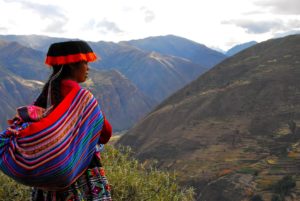
Join us in our journey to Peru, a region that was once home to several ancient cultures. From the Norte Chico civilization in the 32nd century BC, the oldest in the Americas, to the Inca Empire, Peru has one of the longest histories of civilization of any country, tracing its heritage back to the 4th millennia BCE.
10 nights / 11 days
Day 01
Arrival Lima
Fly into Lima airport where you will be received by an Ibex representative holding a placard with your name on it followed by surface transfer in your vehicle to your hotel. Check in to your hotel and catch up on jet lag.
Casa Republica
When fog bundles its colonial facades and high rises, Lima’s enchantments come across as all too subtle. After Cairo, this sprawling metropolis is the second-driest world capital, rising above a long coastline of crumbling cliffs.
Day 02
Lima
After breakfast your guide picks you up from the hotel and takes you visit Larco Museum. This is one of the best organized museums in Lima, showing a complete perspective of the different stages of cultural development in the Peruvian territory, establishing at the same time a chronological parallel with the most significant civilizations around the world.
Lunch takes place at Café del Museo.
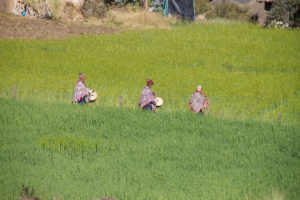
After lunch you will start your visit to Lima City. Despite a general belief saying that Lima has not much to offer, during this afternoon you will note that this city has an impressive past and history to learn about. Your guide leads you to downtown for visiting the main Plaza, the Santo Domingo Monastery and the Osambela Colonial house.
The Santo Domingo stands up for its 15th Century “Azulejos Sevillanos”, as well as the paintings, gardens and immensely significant tradition housed within its walls.
Then you walk to Osambela colonial house; if you are lucky and the weather helps, you may be able to watch the sea from the top of the “tower´s” house, from where the original owner, an important trader, did watch his ships arriving from overseas. Finally you walk a few minutes to Casa Aliaga, an exceptional colonial house, which once belonged to one of the conquerors and that has been inhabited uninterruptedly by the same family until today.
Day 03
Lima
The Word Travel Awards recently named Peru as the World´s leading culinary destination, and Lima is with no doubt the food capital of South America. Amazing biodiversity, a fabulously huge variety of local ingredients, pre-Columbian and Spanish culinary traditions mixed with influences from all over the world and the creativity of local chefs are some of the elements that have and are still building a fantastic local cuisine.
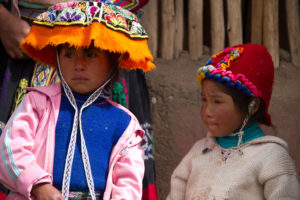
Your guide-chef meets you at the hotel to start a day full of experiences, where you will be able to have a glimpse of the Peruvian life-style, seen from the perspective of food. A 45-minute drive takes you to south of Lima, to an organic farm where the owner will show you the amazing self-sustainable circle that they have created based on Guinea Pig (cuy) breeding. Together with learning about endemic ingredients and getting in touch with local entrepreneurs you will be inspired as to how this initiative is changing lives in remote Andean Communities.
Following this, you are driven to a charming private house in the Lurin Valley for a fascinating cooking experience while enjoying a Pisco Sour. You may also want to take the time to visit the pottery studio owned by the hostess’ family, who happens to be one of the most renowned producers of fine ceramics in Peru.
Your day ends back in Barranco district where you can go for a short walk through the charming streets, art galleries and shops.
Day 04
Lima – Cusco by flight – Ollantaytambo by road
In the morning, a representative meets you at the hotel and takes you to the airport to board your flight to Cusco.
On arrival at Cusco airport, you are welcomed by your tour guide, who joins you for the one-and-a-half hour drive to the Sacred Valley of the Incas.
The Valley is located 500 meters lower than Cusco City, today we are going to visit Pisac Inca ruins, a quite impressive archaeological site, where you will find large terraces, ancient cemeteries and a number of buildings formerly used as residences for high-ranked personalities, and also as worship areas. Together with the archaeological site, the traditional market is one of Pisac’s attractions; there you find the time to walk slowly from one stand to the other, admiring the typical art-crafts and at the same time watching and even trying some of the local products.
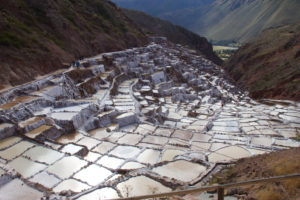
Dominated by two massive Inca ruins, the quaint village of Ollantaytambo (known to locals and visitors alike as Ollanta) is the best surviving example of Inca city planning, with narrow cobblestone streets that have been continuously inhabited since the 13th century. After the hordes passing through on their way to Machu Picchu die down around late morning, Ollanta is a lovely place to be. It’s perfect for wandering the mazy, narrow byways, past stone buildings and babbling irrigation channels,
Day 05
Ollantaytambo
After breakfast, you visit Ollantaytambo archaeological site and walk the narrow streets of which is famous for being the last Inca Village still populated until our days. This is for sure our favorite village in the Sacred Valley.
Today´s lunch is not just lunch but a whole experience during which you will visit an organic farm set on an old Inca Terrace and participate on the preparation of a traditional Pachamanca. The Pachamanca is an ancient cooking technique consisting in an earth-oven in which native ingredients such as different kinds of tubers, vegetables and meats are wrapped in local herbs and cooked underground using wood-fire heated stones. The owner of this place just started a tiny traditional distillery, where he is developing fascinating products using different Andean ingredients. You may want to have a look at it and perhaps try one or two sips of the Andean Whisky! Not to forget the visit to the coffee roaster followed by an expresso full of Andean flavour.
Day 06
Ollantaytambo – Excursion to Chinchero
In the morning you will drive to Chinchero where you will participate on a weaving demonstration followed by a hands-on workshop focused in the process of natural dying.
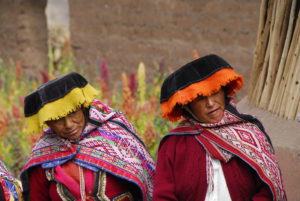
During this activity you will meet and share time with a group of master weavers who have spent over 35 years working together in reviving their traditional weaving techniques. Today, their main objective is to weave high quality textiles. In addition, it was 20 years ago when over 50 children started to learn the art of weaving and producing textiles. This has become an excellent initiative to preserve the unique textile traditions.
To complement the experience, lunch today takes place in a traditional house right by the workshop.
During the afternoon you may still find the time for a visit to Maras Salt terraces and maybe Moray.
Day 07
Ollantaytambo – Aguas Calientes by train
During the morning your guide meets you at the hotel to lead you to board a train. The journey is almost two-hour long.
Once in Aguas Calientes station, your guide leads you to the bus-stop, to take the 25 minute bus ride up to the ruins. The Incas worshiped nature, and built many of their structures in harmony with the dramatic landscape. Your guide will take you through the lost citadel, explaining the different theories surrounding each section. During the afternoon you have the time to continue the visit around the citadel, or perhaps going for a walk to an interesting area such as the “Inti Punku” or Sun Gate, the point from where Inca Trail hikers are able to watch Machu Picchu for the first time. Depending on your physical condition, this walk may take from 45 to one hour uphill walking, and then from 30 to 45 minutes on the way back to Machu Picchu. Whenever you are ready, you can take the bus back to Aguas Calientes.
Important Notice: Please consider that Inca Rail (train company covering the service to Machu Picchu) doesn’t allow passengers to travel with voluminous baggage, allowing only a small piece of hand-luggage that should travel with the passenger. This is why we suggest traveling with a small backpack or bag, where you can pack only what is strictly necessary to spend two nights in the Machu Picchu area.
Vista Al Rio
Also known as Machu Picchu Pueblo, this town lies in a deep gorge below the ruins. A virtual island, it’s cut off from all roads and enclosed by stone cliffs, towering cloud forest, and two rushing rivers.
Day 08
Aguas Calientes – Ollantaytambo by train – Cusco by road
After breakfast, transfer to railway station to board train to Ollantaytambo. On arrival at the station, drive to Cusco.
Remainder of the day is at leisure after check in.
Antigua Casona San Blas
Although Machu Picchu is to be considered the symbol of the Inca Empire, reputation earned thanks to its spectacular location and architecture, the true Inca jewel is Cusco, ancient capital of the Empire, where the Incas did rule and were considered god-kings. In addition, the arrival of the Spanish Conquerors and the Catholic faith, brought another huge architectural transformation, resulting in a completely unique City
Day 09
Cusco
After breakfast, your guide meets you at your hotel and takes you visit the most representative sites of the city, which gives you the chance to appreciate, in a very specific way, the complexity of the Peruvian history.
You will visit the 16th Century Cathedral and the rich Colonial treasures it houses; you will also visit the Santo Domingo Convent, once the Sacred temple of the Sun, also known as the Qoricancha, which inner walls were, according to the chronicles, once completely covered in gold, housing natural-size gold statues.
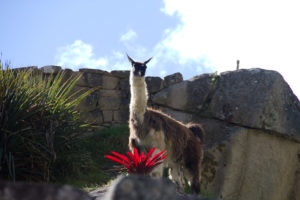
Then you will have enough time to either visit the San Pedro Market, Cusco’s main market, where you will be able to experience the real Cusco and its people’s customs, or either walks along the San Blas traditional neighbourhood, which narrow streets resemble the charm of ancient towns in southern Spain.
After enjoying some free time for lunch, your transport picks you up to go visit the nearby archaeological Incan sites, and Sacsayhuaman among them. On the way you find the opportunity to watch Cusco from above, clearly appreciating the original Inca design of the City, over which the Colonial and Modern Cusco have been built.
You visit Sacsayhuaman, commonly called “fortress”, because of the huge stone blocks that make up its walls, but really not designed for the purpose of being a fortress, but an important worship area.
You have time to also visit the Quenco, Puca Pucara and Tambomachay archaeological sites.
Day 10 Cusco
After breakfast, you visit Andahuaylillas a pictures colonial town which used to be a “reducción de indios”, or a center where native farmers got catholic instruction from Spanish priests in colonial times. There you find a unique baroque church with amazing murals, paintings and altars. Then you will visit Huaro and Canincunca Churches. Here you can still sense the mixture of catholic and pre-Columbian tradition. Then you drive back to Cusco.
During the afternoon you will visit a local jeweller where you can do some shopping.
Day 11
Cusco – Lima by flight – Depart
Morning is at leisure.
Transfer to airport to board scheduled flight to Lima airport.